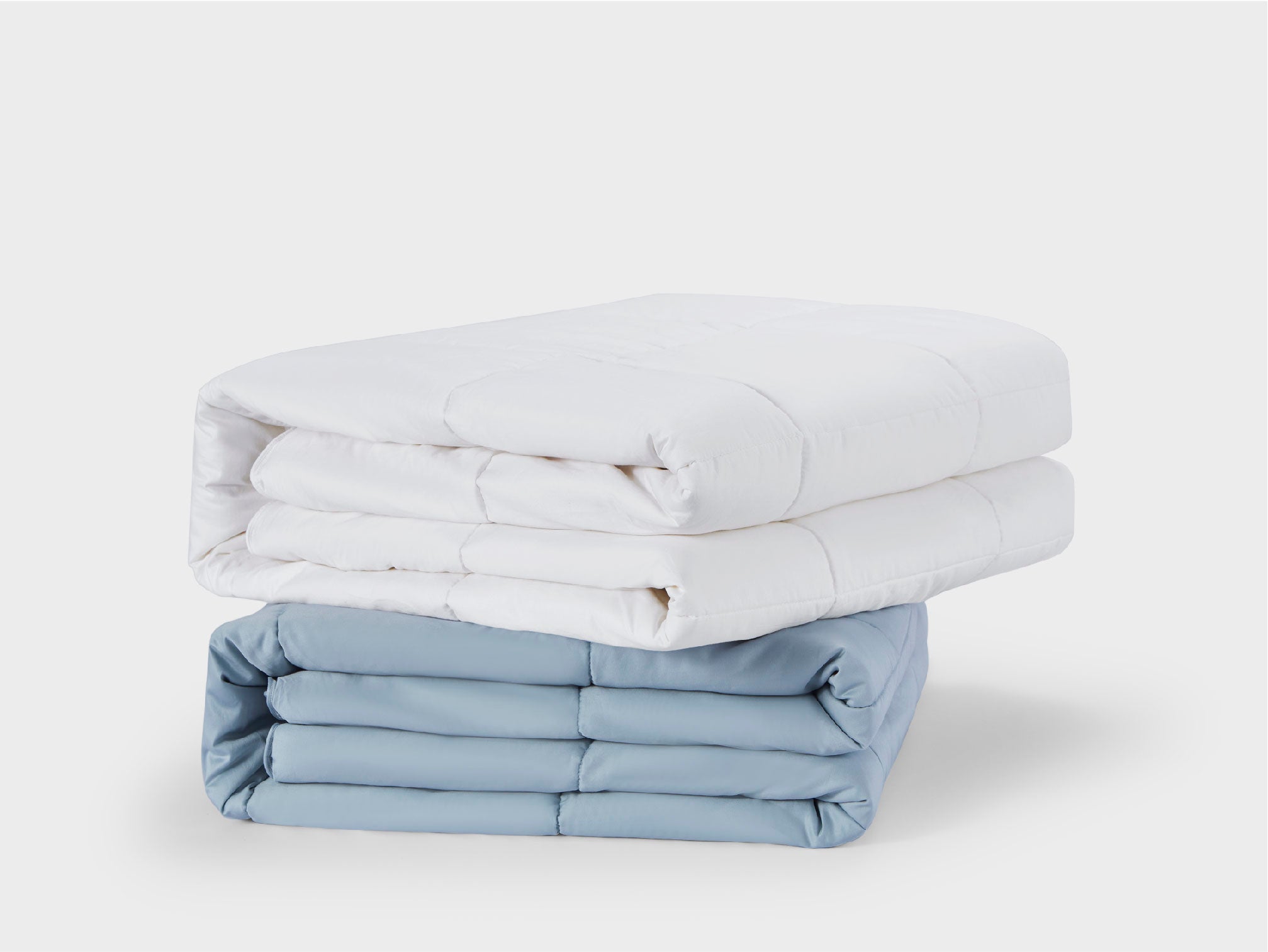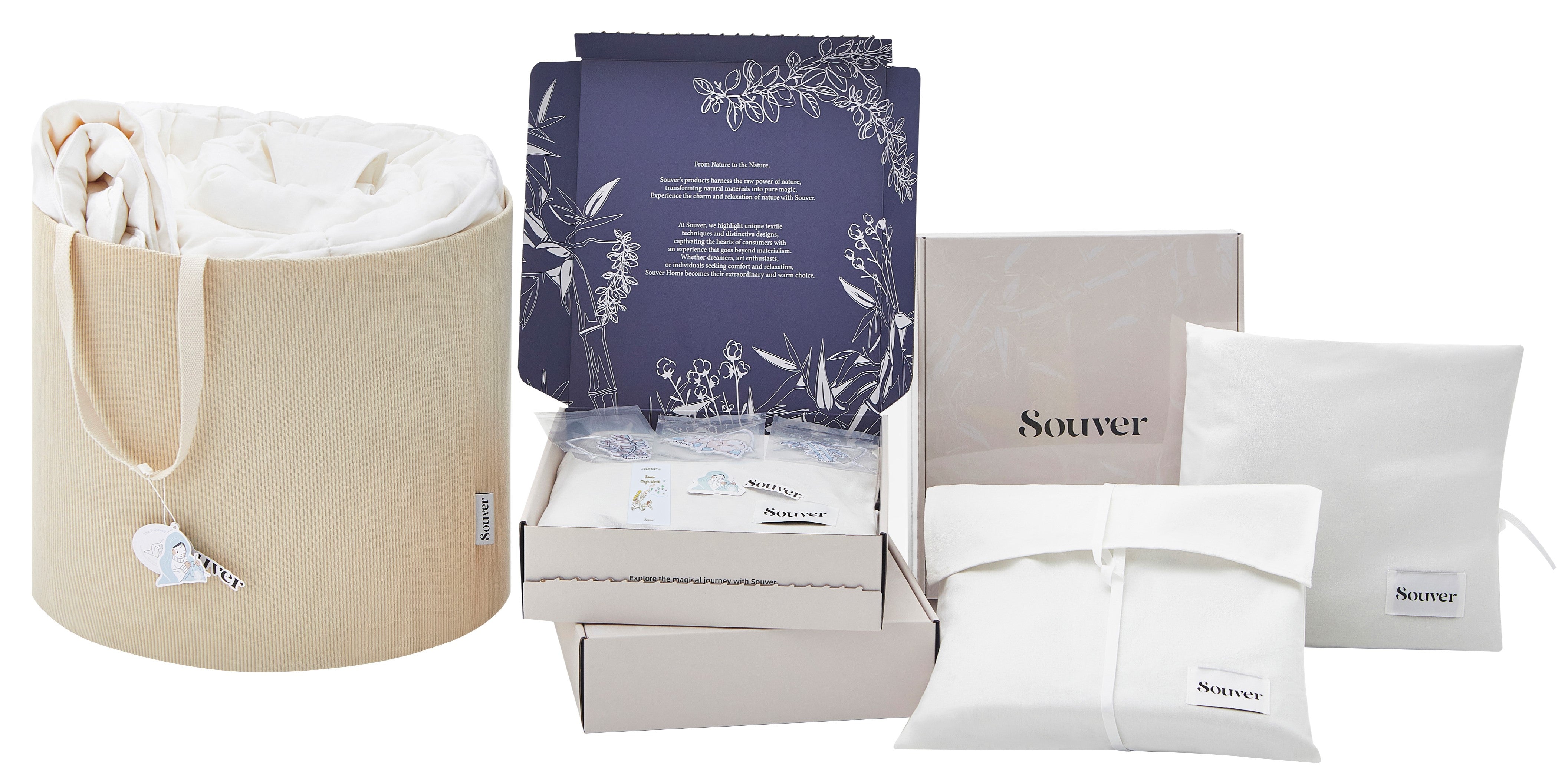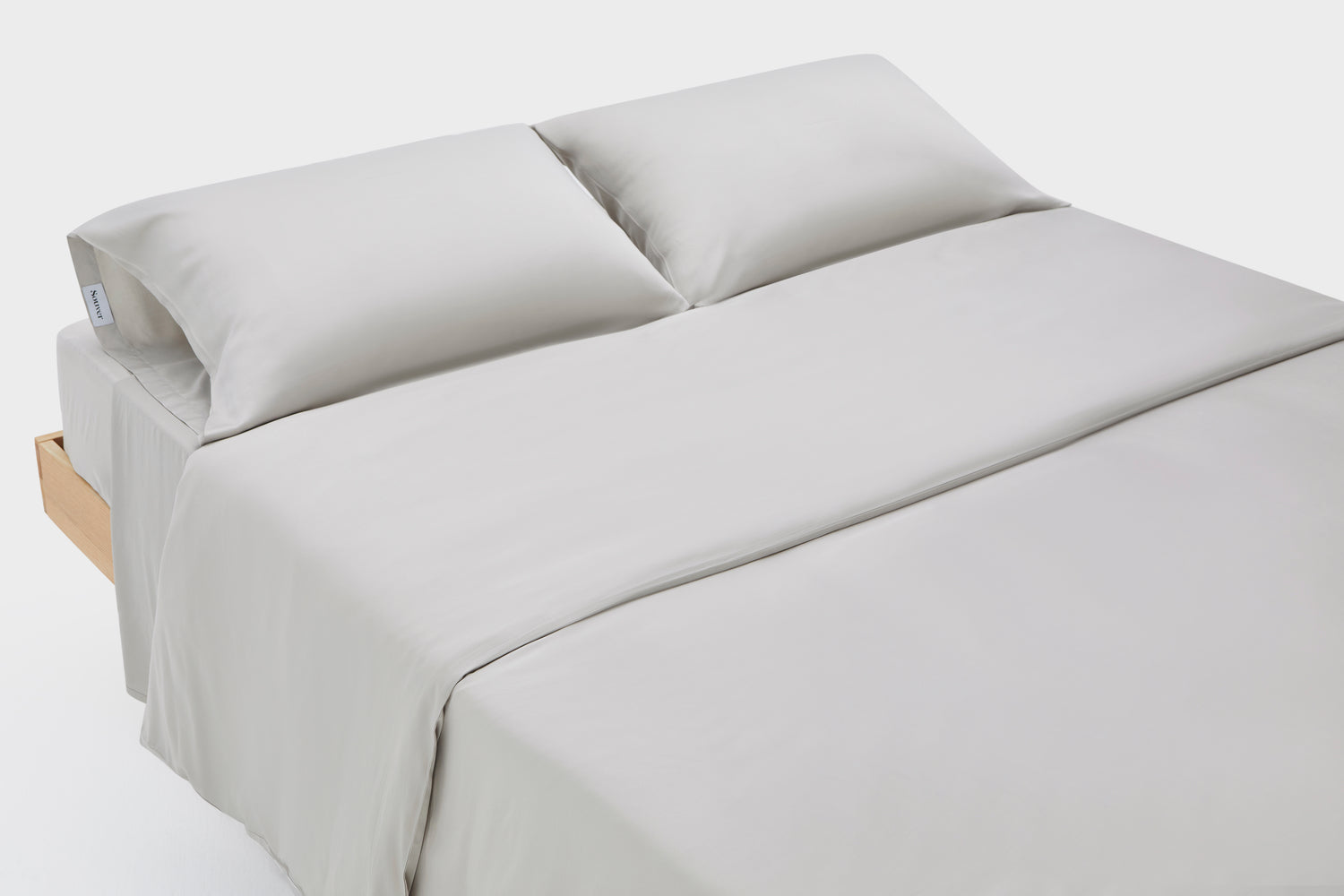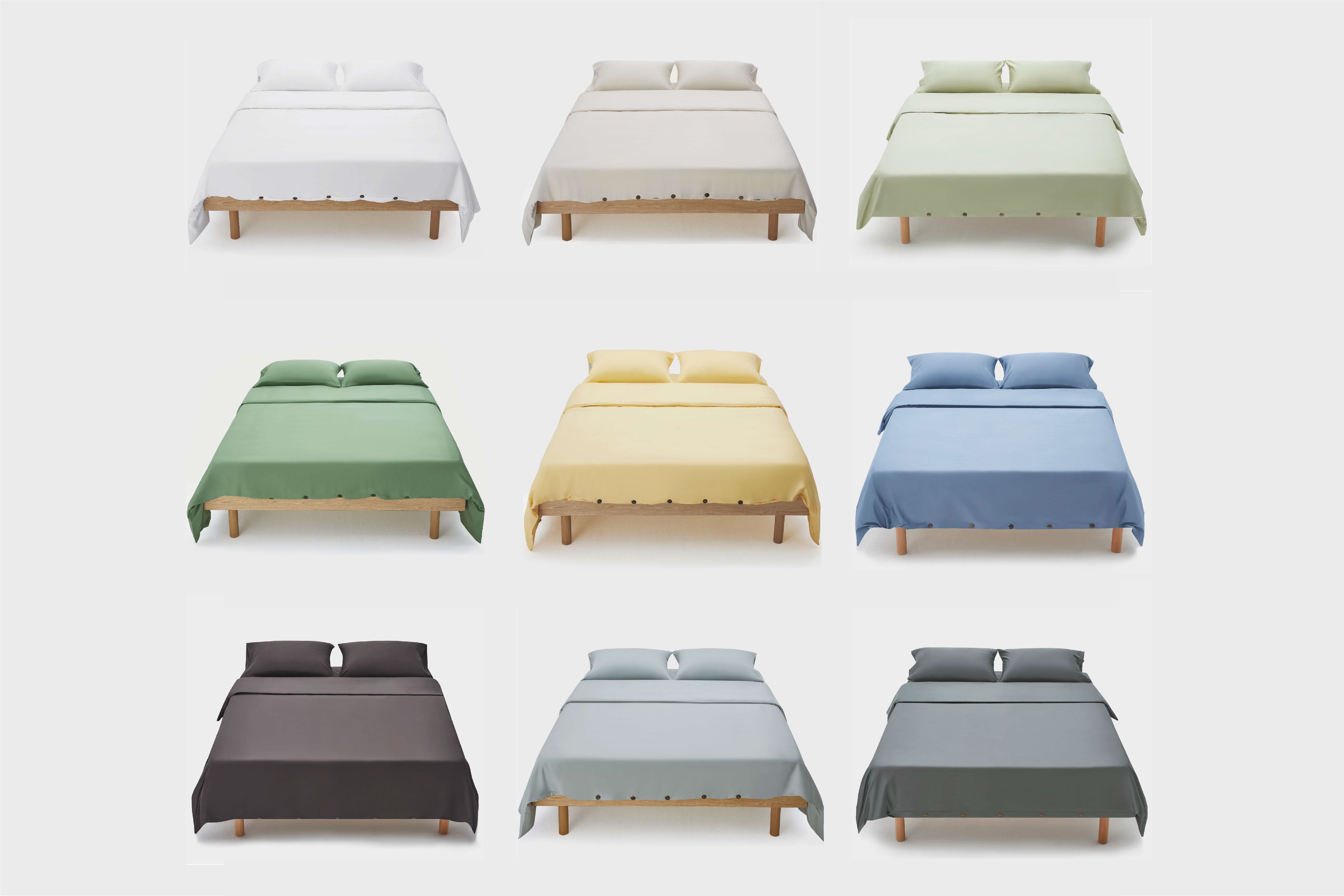A bed duvet cover, a seemingly common household item, carries more intrigue and versatility than meets the eye. Often mistaken for a comforter or blanket, a duvet cover is a unique bedding accessory that has recently gained popularity.
So, what exactly is a bed duvet cover, and why should you consider incorporating one into your bedding collection? In this guide, we will delve into the basics of a duvet cover, its benefits, and how to choose the right one for your needs.
What Is a Duvet?

A duvet is a type of bedding that is a soft, flat bag filled with down, feathers, wool, or a synthetic alternative. Compared to comforters, duvets are generally more simplistic and lightweight. They are designed to be used with a duvet cover, much like a pillow with a pillowcase.
What is a Bed Duvet Cover?

The bed duvet cover is a soft bag that slips over the duvet and has a closure; it is like a pillowcase. A duvet cover is a protective layer for your duvet insert, keeping it clean and well-maintained without sacrificing style and design.
It also provides an extra insulation layer, ideal for colder seasons, typically made of soft and durable cotton, linen, or silk fabric. It comes in various sizes to fit different types of bedding.
What Is a Duvet Insert?

A duvet insert, often simply referred to as a duvet, is the actual comforter that fits inside a duvet cover. It's a plush, quilted blanket filled with down, feathers, wool, or synthetic fibers.
Its effectiveness and suitability depend on factors like filling material, construction, and weight. It is usually paired with a duvet cover for ease of maintenance and aesthetic flexibility.
Importance of Matching the Duvet Cover with Bedroom Decor
Choosing the right duvet cover isn't merely about comfort and functionality. It's also an opportunity to enhance the aesthetic appeal of your bedroom.
A well-matched duvet cover can tie together the various elements of your bedroom decor, providing a cohesive and visually pleasing result. It can serve as a statement piece or blend seamlessly with the theme of your room, reinforcing the color scheme, design style, or mood you wish to convey.
The duvet cover can also help imbue your bedroom with a certain atmosphere. A light-colored or white duvet cover can make a small room appear larger and airier, while a dark-colored or richly patterned duvet cover can bring warmth and coziness to a spacious room. Textured materials like linen or embroidered cotton can add a tactile element to your bedroom decor, encouraging relaxation and comfort.
So, when selecting a duvet cover, take a moment to consider its potential impact on your bedroom decor. Think about the colors, patterns, and textures that best accentuate your room's features, enhance your comfort, and reflect your style. With the right choice, your duvet cover can do more than keep you warm at night; it can transform your bedroom into a true personal sanctuary.
Types of Bed Duvet Covers
Cotton duvet covers are popular for their durability, softness, and breathability. They come in various weaves and finishes, including percale and sateen, offering varying degrees of texture and sheen. Cotton duvet covers are ideal for year-round comfort as they can wick away moisture in warmer months and provide warmth in the colder seasons.
Below are other types of duvet covers that you may come across:
1. Linen Duvet Covers
Linen duvet covers are loved for their unique texture, luxurious feel, and high durability. Made from the flax plant, linen is naturally hypoallergenic and temperature-regulating, making it a great choice for summer and winter. Over time, linen becomes softer and even more comfortable.
2. Silk Duvet Covers
Silk duvet covers offer a high-end, luxurious feel. Known for its smooth texture, silk is gentle on the skin and hair. It is also naturally hypoallergenic and temperature-regulating. However, silk requires special care and is less durable than cotton or linen.
3. Sateen Duvet Covers
Sateen duvet covers, made of a specific cotton weave, offer a silky smooth touch and a glossy sheen. These covers are more tightly woven and weightier, making them great for cooler temperatures. They're known for their lustrous finish and elegant drape.
Size Variations of Bed Duvet Covers
Like sheets and comforters, duvet covers come in standard sizes corresponding to the bed size. The common sizes include Twin, Full/Double, Queen, King, and California King.
1. Twin Duvet Covers
Twin duvet covers are usually 68 inches wide by 86 inches long, making them perfect for single or twin beds. They are especially well-suited for children's rooms or guest bedrooms.
2. Full/Double Duvet Covers
Duvet covers for full/double beds have dimensions of 86 inches wide by 86 inches long. Specifically designed for full or double-sized beds, these covers are slightly wider than twin covers and provide more coverage for larger mattresses.
3. Queen Duvet Covers
Queen duvet covers are typically 90 inches wide by 92 inches long, making them suitable for queen-sized beds. They offer a little extra length compared to full/double covers, providing more overhang on the sides of the bed.
4. King and California King Duvet Covers
King and California King duvet covers are the largest standard sizes at 106 inches wide by 92 inches long. These bed duvet covers are perfect for their respective bed sizes, with King being the more common size and California King slightly longer and narrower.
How to Choose the Right Bed Duvet Cover?

When choosing the right bed duvet cover, several key factors should be taken into account:
1. Size
The first step is to measure your bed and duvet insert. Ensure that you choose a cover that fits perfectly. A duvet cover that's too big will make the duvet insert shift around, while one that's too small will only partially cover the insert.
Check out: Duvet Sizes and Dimensions Guide
2. Material
Consider the fabric of the duvet cover. If you prefer something soft and breathable, cotton might be your best bet. Silk or sateen could be a great choice if you're looking for a luxurious feel. For a rougher, textured look and feel, you might consider linen.
3. Maintenance
Look into the care instructions for the duvet cover. While some fabrics may require dry cleaning, others could be machine washable. If you prefer a low-maintenance option, choose a material that is easy to clean and quick to dry.
4. Design
Think about your bedroom aesthetics. The design, color, and pattern of the duvet cover should complement the overall theme of your room. If you like frequently changing your room's look, consider reversible duvet covers with two designs.
5. Budget
Duvet covers come in various prices, so it's important to set a budget and stick to it. Remember to consider the cost of the cover and any necessary inserts or additional bedding accessories.
Step-by-step Guide on How to Insert a Duvet into the Cover
Here's a step-by-step guide to inserting a duvet into its cover:
1. Lay down the duvet cover
Start by turning it inside out, then lay it on your bed with the opening at the foot end.
2. Place the duvet on top
Place your duvet on top of the cover. Ensure its corners align with the corners of the duvet cover.
3. Secure the corners
If your duvet cover has ties or clips in the corners, fasten them to the corresponding corners of the duvet to keep it in place.
4. Roll the duvet and cover
Starting from the head of the bed, roll the duvet and duvet cover together like a burrito. Roll down to the foot of the bed.
5. Invert the cover
When you reach the end, take the opening of the duvet cover and invert it over the ends of the "burrito" roll. The duvet should easily slide into the cover if you've rolled it tightly enough.
6. Unroll the duvet
Now, unroll the duvet and cover back towards the head of the bed. Your duvet should now be perfectly encased within the cover.
7. Secure and fluff
Finally, secure the opening of the duvet cover, either by zipping or buttoning it up. Give the duvet a good fluff to distribute the filling evenly, and you're done!
Bed Duvet Cover Vs. Comforter Cover: Are they the Same?
While bed duvet covers and comforter covers might seem similar, there are notable differences between the two. Duvet covers are designed to encase a duvet, typically filled with down, feather, wool, or a synthetic alternative. The duvet cover is removable and washable, making it a practical choice for protecting the duvet insert. It's typically lightweight and form-fitting, designed to encase the duvet without adding much bulk.
On the other hand, a comforter is usually a one-piece bedding item that is both the insert and the cover sewn together. It is often filled with synthetic fiber filler, which is less fluffy and insulating than a duvet. A comforter cover is a decorative cover that goes over the comforter but doesn't replace it.
Compared to duvet covers, comforter covers are not standard and are less common in the market. So, while both serve similar purposes, they are used with different types of bedding and offer different levels of flexibility and comfort.
Benefits of Using a Bed Duvet Cover
Bed duvet covers offer numerous benefits that make them a worthwhile addition to any bedroom. Some of these include:
1. Easy maintenance
Replacing a duvet cover is much easier and more cost-effective than replacing a whole comforter or duvet insert.
2. Versatility
With a wide range of styles, colors, and patterns, duvet covers offer endless design options to match your style and change the look of your bedding.
3. Hygiene
Duvet covers are a barrier against dirt, sweat, and oils, keeping your duvet insert clean and prolonging its lifespan.
4. Comfort
The added insulation layer provides warmth and coziness in colder seasons, while the lightweight fabric allows for breathability in warmer months.
5. Aesthetic Appeal
Duvet covers can serve as a statement piece in your bedroom, adding texture, color, and personality to the overall design.
Final Words!
When choosing bedding for your bedroom, a duvet cover is an essential item that is both functional and beautiful. With the right size, material, design and budget, you can easily find the perfect duvet cover to suit your needs and style. With a simple step-by-step guide to inserting your duvet into the duvet cover, you can easily change your bedding.








Dejar un comentario
Este sitio está protegido por hCaptcha y se aplican la Política de privacidad de hCaptcha y los Términos del servicio.